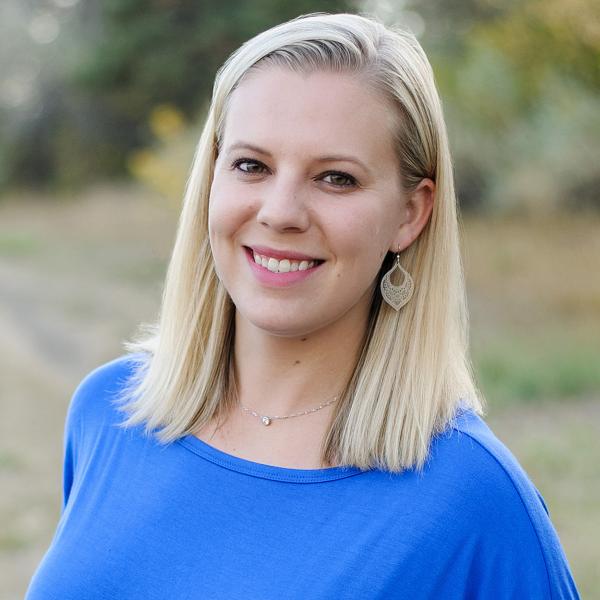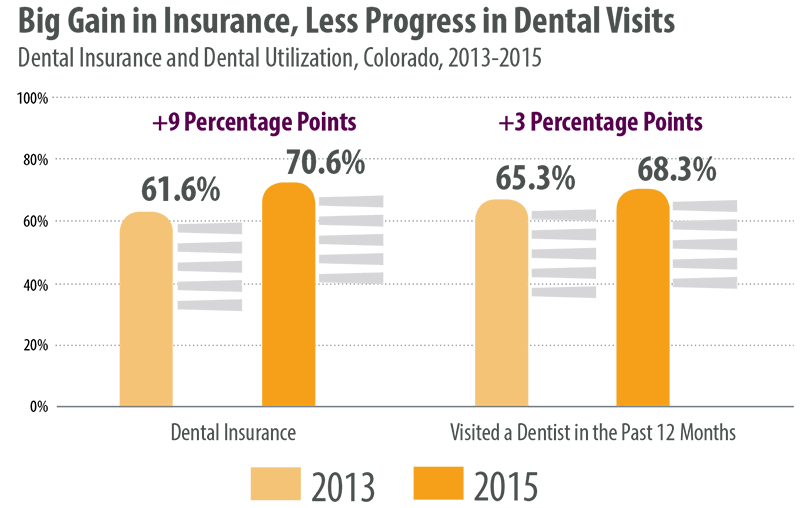Findings from the Colorado Health Access Survey (CHAS) are always a cause for intense study at the Colorado Health Institute. We pore over the numbers like kids opening presents. (Yes, we might have been unusual kids. We’ve embraced it.)
For me, one of the most puzzling results of the 2015 survey has to do with the relationship between dental insurance and dental visits.
The percentage of Coloradans with dental insurance increased a good deal in nearly all of the state’s 21 health statistics regions (HSR), while the percentage who said they had visited a dentist in the past 12 months rose just a little (or even declined in some areas).
For the state as a whole, the proportion of Coloradans with dental insurance jumped to 70.6 percent in 2015 from 61.6 percent in 2013 — an increase of nine percentage points. This was thanks in large part to increased enrollment in Medicaid, which now includes dental care benefits for adults. But the percentage of Coloradans who said they had visited a dentist in the previous year increased just three percentage points, to 68.3 percent in 2015 from 65.3 percent in 2013.
This pattern was repeated across the state. In nine of the 21 HSRs, the percentage of people who went to a dentist actually decreased from 2013 to 2015, even as more residents of those regions gained insurance coverage.
In Phillips, Logan, Morgan, Sedgwick, Washington and Yuma counties (HSR 1), dental insurance coverage increased 14 percentage points but the dental visit rate dropped 4.2 percentage points. In Delta, Gunnison, Hinsdale, Montrose, Ouray and San Miguel counties (HSR 10), the dental insurance rate rose 14.3 percentage points while the dental visit rate fell 1.6 percentage points.
Douglas County (Region 3) in the metro Denver area experienced a similar phenomenon: The percentage of residents with dental insurance jumped by more than 13 percentage points, but the percentage of residents who saw a dentist dropped about three percentage points.
While these regions experienced the biggest gap between changes in coverage and visits, other areas were similarly perplexing.
I’ve thought about possible explanations for all of this. A few hypotheses:
- People tried to make a dentist appointment but couldn’t get one. Many areas of the state have a documented shortage of dentists, and this barrier to access may have been exacerbated due to major growth in Medicaid enrollment.
- Few people enjoy going to the dentist. Newly insured people may have been satisfied to know they were protected in case of an emergency, but they weren’t quick to make an appointment for a routine cleaning. While it’s generally recommended that we get our teeth cleaned every six months, many Coloradans go years between appointments.
- Some of those who hadn’t previously had dental insurance may not have known how to use their insurance, how frequently to visit a dentist or even that they had gained dental coverage as part of their benefits package.
The trend of fewer people visiting the dentist isn’t unique to Colorado and has been occurring since before the passage of the Affordable Care Act. The American Dental Association has noted that over the decade from 2000 to 2010, the percentage of U.S. adults seeing a dentist decreased, although the rate increased for kids.
Anecdotal evidence suggests the same trend is happening in other states. However, since Medicaid eligibility was expanded in Colorado in 2013 and adult dental insurance coverage has become more widespread, many had expected to see more people in dentists’ offices.
Now that more Coloradans have insurance for those pearly whites, the focus is shifting from coverage to access — ensuring that people with dental insurance are able to get into a dentist’s chair.


